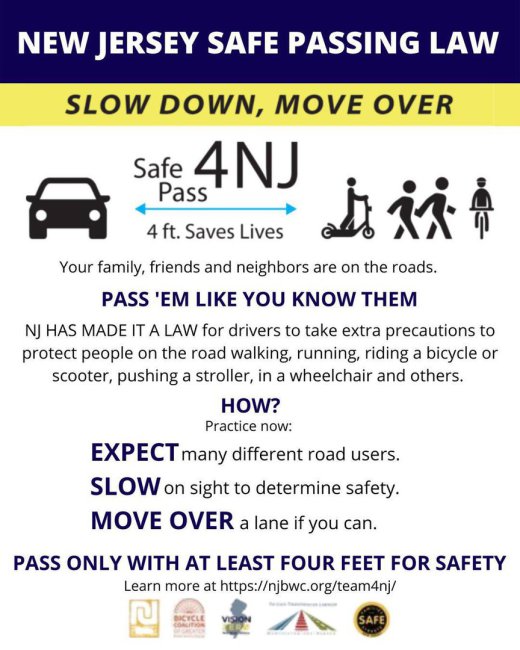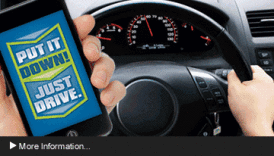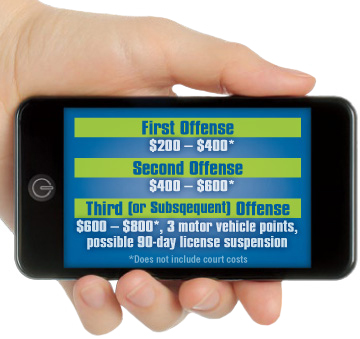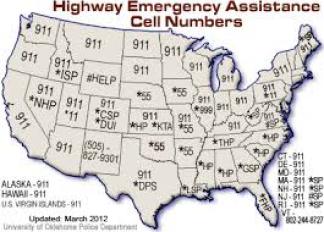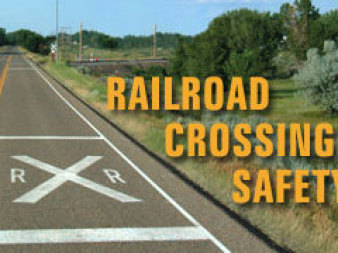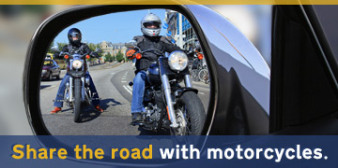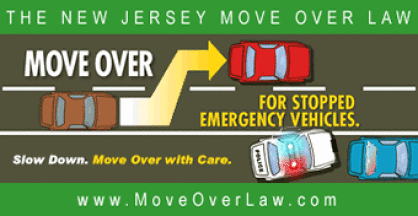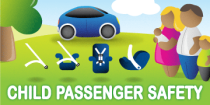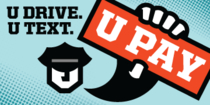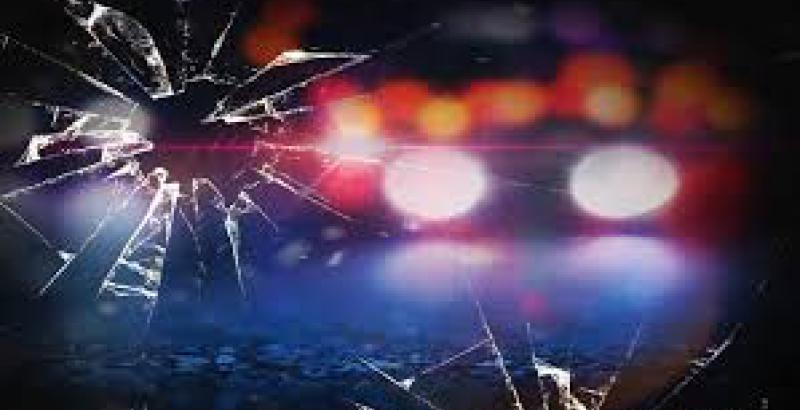
| Distracted Driving Overview | ||||||||||||||||||||||||||||||||||||||||||||||||||||||||||||||||||||||||||||||||||
| Distracted driving kills. The friends, family, and neighbors of the thousands of people killed nationwide each year in distracted driving crashes will tell you it is a very serious safety problem. The nearly half a million people injured each year will agree. Distracted driving is a dangerous epidemic on New Jersey’s roadways, being cited as a major contributing factor in nearly 800,00 motor vehicle crashes in the state from 2012 to 2016. Nationwide 3,166 people were killed in distracted driving crashes in 2017 alone. | ||||||||||||||||||||||||||||||||||||||||||||||||||||||||||||||||||||||||||||||||||
| Distracted Driving Key Facts and Statistics | ||||||||||||||||||||||||||||||||||||||||||||||||||||||||||||||||||||||||||||||||||
| Distracted driving is any activity that could divert a person’s attention away from the primary task of driving. All distractions endanger driver, passenger, and bystander safety. These types of distractions include: | ||||||||||||||||||||||||||||||||||||||||||||||||||||||||||||||||||||||||||||||||||
|
||||||||||||||||||||||||||||||||||||||||||||||||||||||||||||||||||||||||||||||||||
| But, because text messaging requires visual, manual, and cognitive attention from the driver, it is by far the most alarming distraction. |
9-1-1 and #77 Emergency Message
Each year millions of cellular telephone calls regarding roadside emergencies and life-threatening accidents pour into New Jersey's emergency call centers. The calls come in through the motorists use of the 9-1-1 System, the #77 Dangerous Driver System, and various other cellular hotlines that have been established. It is very important to use the appropriate system to report incidents you observe, so that the right priority is given to your call and it is properly directed.
Generally, 9-1-1 should be used to report life-threatening emergencies, such as motor vehicle accidents, disabled motor vehicles, all suspected criminal activity, and other general emergencies requiring immediate police or medical service response. 9-1-1 calls are priority calls and services are dispatched immediately.
The #77 Dangerous Driver System should be used to report aggressive or erratic driving that poses a risk to other motorists on the roadway. While these calls are important, 9-1-1 calls are prioritized over #77 calls as required by law. In #77 call response, police services are made aware of the report and respond according to availability and proximity to the incident, as well as, seriousness of the report. This system should not be used to report 9-1-1 emergencies.
Callers are reminded that when using either system, current wireless phone technology does not automatically provide calltakers with the information they need to provide appropriate response to the emergency. That's why it is important for all wireless users to remember to provide calltakers with the exact location of the incident (roadway, direction, milepost), type of emergency, description of those involved(vehicle registration, make, color), and a callback phone number.
As always, safety of the motorists is our first concern, so if you need to use the above services when driving, please pull over to a safe place, and then provide as much specific information as possible. The more detailed information you provide, the quicker we can help.
|
||||||||||||||||||||||||||||||||||||||||||||||||
| Motorcycle Safety Programs in New Jersey: |
| 90% of the riders who are involved in crashes have no formal training. Motorcycle Safety Foundation (MSF)Training Programs are designed to help new or experienced riders suffer fewer injuries in the event of a crash or possibly avoid crashes altogether. Other potential benefits of a credited training program include road test waivers, insurance discounts and license point deductions. For a complete list of MSF certified RiderCourse training locations in New Jersey, please visit our partner organization NJRIDESAFE.ORG. |
| Working on the roadside is a dangerous and sometimes deadly job. That’s why the Division of Highway Traffic Safety is asking motorists to Make the Move. What’s the Move? When you see flashing lights on the side of the road, slow down, and if it’s safe, Move Over – away from police, fire crews, paramedics and tow truck drivers. If you make the move, others will follow. |
As of September 1, 2015, the NJ Car Seat Law will change. The Legislation is a bit difficult to understand, but if you abide by the following 5 steps you should be in compliance and your child will remain safe while traveling.
Any child under the age of 8 years old and a height of 57 inches shall be secured as follows in the rear seat of a motor vehicle:
1. Children under the age of two (2) and weighing less than 30 pounds must be in a rear facing car seat equipped with a five-point harness. The car seat must be in a rear seat of the vehicle.
2. From age two (2) through the age of four (4) and weighing up to 40 pounds, children must be secured in a seat with a five-point harness, either rear facing (up to the height and weight limits of the particular seat) or forward facing in the rear seat of the vehicle with a five-point harness.
3. For ages four until age eight and less than 57” (4’9”), children must be seated in either a car seat with a five-point harness or a booster seat secured with the restraint required by the manufacturer, also in the rear set of the vehicle.
4. Age 8 through 17 must wear a properly adjusted and fastened seat belt.
5. If there are no rear seats (e.g., standard cab pickup truck), the child must be secured in the appropriate car seat or booster for their age, weight, and height, in the front passenger seat. If the child is in a rear-facing car seat, the passenger side airbag must be disabled or turned off.
Link to new law: http://www.njleg.state.nj.us/2014/Bills/PL15/50_.PDF
Any further questions or concerns can be forwarded to the UCTOA by visiting WWW.UCTOA.COM and going to “Contact Us” and e-mailing a your question. It will be answered in a timely fashion as to help you keep your family safe. Also further information will be made available on our website, and also through your local hospitals an pediatricians.
Special thanks to NJDHTS.
ICE AND SNOW (REMOVE IT BEFORE YOU GO)
Ice & Snow - Remove It Before You Go
Remember to remove all ice and snow from your vehicle before driving, especially from the hood, windows and roof. It’s the law in New Jersey! Motorists who fail to do so face fines of $25 to $75 for each offense, regardless of whether the ice and snow is dislodged from the vehicle. If flying ice or snow causes property damage or injury to others, motorists face fines of $200 to $1,000 for each offense.
| Crackdown Overview | ||||||||||||||||||||||||||||||||||||
|
|
||||||||||||||||||||||||||||||||||||
| Distracted driving is a dangerous epidemic on New Jersey’s roadways. Driver inattention has been a major contributing factor in nearly 750,000 motor vehicle crashes in the state since 2009 and nationwide, 3,328 were killed in distracted driving crashes in 2012 alone. |
||||||||||||||||||||||||||||||||||||
|
|
||||||||||||||||||||||||||||||||||||
| To combat these troubling statistics, law enforcement agencies throughout New Jersey will be using a combination of traditional and innovative strategies to crack down on motorists who text and drive. This effort is a part of the national U Drive. U Text. U Pay high-visibility enforcement (HVE) campaign that combines periods of intense anti-texting enforcement coupled with advertising and media outreach to let people know about the enforcement and convince them to obey the law. U Drive. U Text. U Pay enforcement strategies include roving police patrols, spotters on highway overpasses, and stationary police vehicles prominently placed at strategic locations. |
||||||||||||||||||||||||||||||||||||
|
|
||||||||||||||||||||||||||||||||||||
| Historically, the most effective tool used to change driver behavior are targeted law enforcement campaigns, like Drive Sober or Get Pulled Over and Click It or Ticket. Since their inception, these two initiatives have resulted in significant reductions in impaired driving and gains in seat belt usage, respectively. |
||||||||||||||||||||||||||||||||||||
|
|
||||||||||||||||||||||||||||||||||||
| Distracted driving is any activity that could divert a person’s attention away from the primary task of driving. All distractions endanger driver, passenger, and bystander safety. These types of distractions include: |
||||||||||||||||||||||||||||||||||||
|
||||||||||||||||||||||||||||||||||||
|
|
||||||||||||||||||||||||||||||||||||
| But, because text messaging requires visual, manual, and cognitive attention from the driver, it is by far the most alarming distraction. |

